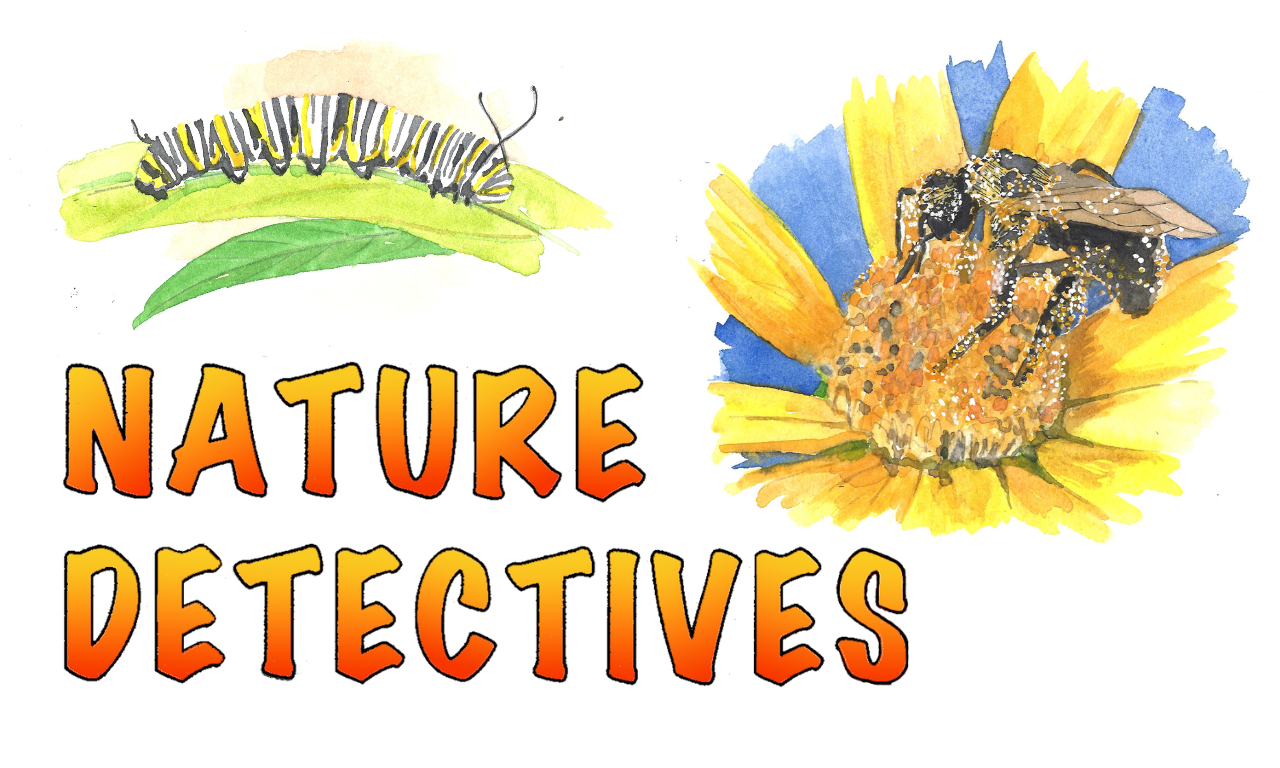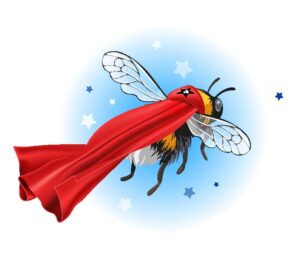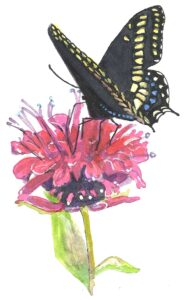It is summertime! Something natural and important is happening everywhere… and you may not even notice. We’re talking about pollination and pollinators- big words and a big deal. Pollination affects everyone and everywhere- not just Boulder County, but the entire planet!
Pollination is how flowering plants reproduce, spread, and make new seeds and fruit. Plants don’t walk around, they’re immobile, so many must rely on relationships with helpers in order to reproduce and spread. When pollen is transferred from the male part of a plant to the female part of another plant of the same species, pollination is happening. Pollen is the fertilization agent.
Some options for pollination are wind, water, and animals, including insects. We focus on insects and birds today. It’s estimated that more than 80% of flowering plants use animals (mostly insects!) for pollination. That’s a lot of busy bugs; you could think of them as super heroes!
So, How Does it Work?
Bright colored flowers from native plants, fruits, vegetables, or trees- with sweet smelling, high-energy nectar attract pollinators . A bee, for example, approaches a flower to eat, look for shelter, nest-building materials, or a mate…whatever they’re doing, they may leave with a load of protein-rich pollen- the powdery stuff in the center of the flower.
Pollen is often yellow with sticky teeny barbs to enable it to stay on the pollinator until it goes to the next flower…and the next, and the next, pollinating away. Bees and other insect pollinators prefer yellow pollen as they can’t see the color red; birds and butterflies can see the color red; maybe that is why they often prefer flowers with red pollen. There are many colors of pollen in nature. Remember, the plants have learned what colors, smells, and shapes attract just the right kind of pollinator for them.
Continue Reading & Download the Print Edition
Nature Detectives Library
Every past issue of Nature Detectives can be found in the Nature Detectives Library!




